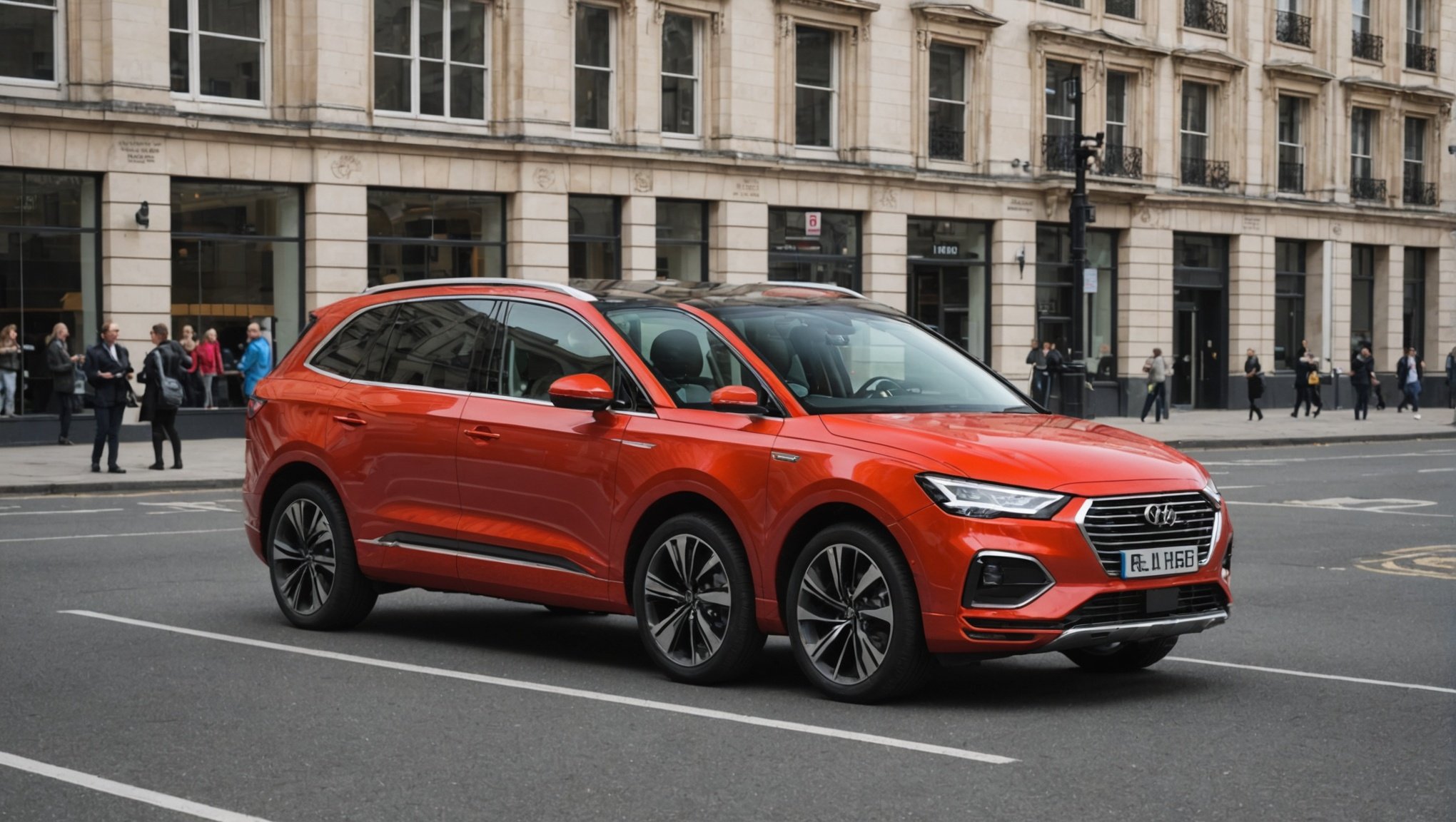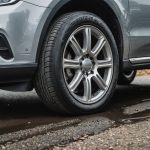Urban driving in the UK presents unique challenges and opportunities for maximizing regenerative braking efficiency. As electric vehicles become increasingly popular, understanding how to optimize this technology can enhance performance and sustainability. This comprehensive guide explores practical strategies to improve regenerative braking in city settings, from driving techniques to vehicle maintenance. Discover how small adjustments can lead to significant gains in energy recovery, making your daily commutes more environmentally friendly and cost-effective.
Understanding Regenerative Braking
Regenerative braking is a crucial technology in electric and hybrid vehicles, transforming kinetic energy into electrical energy during braking. This process extends the vehicle’s range by recharging the battery, thus enhancing efficiency. Regenerative braking systems consist of several key components, each playing a vital role.
Also read : Mastering Vintage UK Car Electrical Repairs: A Guide to Diagnosing and Resolving 1990s Common Issues
At the heart of regenerative braking is the electric motor, which operates in reverse during braking to act as a generator. This conversion is essential as it allows the vehicle to recover energy that would otherwise be lost as heat in traditional braking systems. The captured energy is then stored in the battery, ready to be reused.
In addition to the motor, the system includes a controller that manages the flow of electricity and ensures optimal energy recovery. The controller’s efficiency directly impacts the overall effectiveness of regenerative braking. Furthermore, sensors play a critical role by monitoring the vehicle’s speed and braking force, allowing the system to adjust its operation dynamically.
Also to read : Mastering Depreciation: A Comprehensive Guide to Calculating Luxury Car Value in the UK Market
The importance of regenerative braking in electric and hybrid vehicles cannot be understated. By improving energy efficiency and reducing reliance on external charging, regenerative braking systems contribute significantly to the sustainability and practicality of modern vehicles.
Urban Driving Conditions in the UK
Urban driving in the UK presents unique challenges and characteristics that significantly impact vehicle performance, particularly regarding braking efficiency. Navigating through bustling cities like London or Manchester often involves frequent stop-and-go traffic. This constant starting and stopping can affect the efficiency of regenerative braking systems, as they are designed to capture energy during deceleration. The more frequent the stops, the more opportunities there are to recover energy, but this also places additional demands on the system to perform optimally.
Climate considerations also play a crucial role in urban driving conditions. The UK’s weather is notoriously unpredictable, with rain being a common occurrence. Wet roads can reduce the effectiveness of regenerative braking, as the wheels may not have as much traction, potentially leading to less energy recovery. Additionally, cold temperatures can affect battery performance, reducing the overall efficiency of energy storage.
In urban settings, drivers must also contend with narrow streets and congestion, which can require more precise handling and braking. Understanding these factors is essential for drivers and manufacturers alike, as they influence the design and operation of vehicles equipped with regenerative braking systems in the UK.
Technical Principles of Regenerative Braking
Understanding the braking principles behind regenerative braking is essential for appreciating its role in modern vehicles. At its core, regenerative braking converts kinetic energy, generated by the vehicle’s motion, into electrical energy. This conversion process is fundamental to the system’s ability to recover energy that would typically be lost as heat in conventional braking methods.
The interaction between regenerative braking and traditional braking systems is critical. While regenerative braking is efficient in capturing energy during deceleration, it often works in tandem with traditional brakes. This dual system ensures safety and effectiveness, especially when the regenerative system alone cannot provide sufficient stopping power.
A key component in this process is the electric motor. During braking, the motor reverses its function, acting as a generator to capture and convert kinetic energy into electricity. This energy is then stored in the vehicle’s battery for future use, enhancing overall efficiency.
By understanding these technical principles, one can appreciate how regenerative braking not only contributes to energy recovery but also plays a pivotal role in the sustainability of electric and hybrid vehicles. This synergy between systems ensures that vehicles operate efficiently, especially in energy-demanding urban environments.
Maximizing Regenerative Braking Efficiency
To fully harness the benefits of regenerative braking, certain driving techniques can significantly enhance its efficiency, especially in urban environments. Understanding and implementing these techniques can lead to better energy recovery and improved vehicle performance.
Techniques for Efficient Braking
In city driving, where frequent stops are common, anticipating stops and starts is crucial. By foreseeing traffic lights and junctions, drivers can gradually decelerate, allowing the regenerative system to maximize energy capture. This not only improves efficiency but also reduces wear on traditional brakes.
Importance of Anticipating Stops and Starts
Anticipating stops involves maintaining a keen awareness of the road ahead. This practice ensures that the vehicle decelerates smoothly, optimizing the energy conversion process. It’s a simple yet effective way to boost the performance of the regenerative braking system.
Utilizing Eco-Driving Practices
Incorporating eco-driving practices further enhances efficiency. Techniques such as maintaining a steady speed, avoiding abrupt accelerations, and using cruise control where possible contribute to smoother driving. These practices align well with regenerative braking systems, ensuring they function at peak efficiency.
By adopting these driving techniques, drivers can significantly improve the performance of their regenerative braking systems, leading to enhanced energy recovery and a more sustainable driving experience.
Statistics on Regenerative Braking Performance
Examining performance statistics of regenerative braking systems offers valuable insights into their efficiency data. In urban environments, where stop-and-go traffic is prevalent, regenerative braking systems can recover up to 70% of the kinetic energy that would otherwise be lost. This energy recovery is crucial for enhancing the vehicle’s range and reducing fuel consumption.
Comparative Performance
When comparing regenerative and traditional braking systems, the difference in efficiency is stark. Traditional systems primarily convert kinetic energy into heat, wasting potential energy. In contrast, regenerative systems capture and store this energy, leading to improved efficiency and sustainability. Studies show that vehicles equipped with regenerative braking can achieve a 10-20% increase in overall energy efficiency compared to those relying solely on traditional brakes.
Case Studies
Several case studies highlight the efficiency improvements achieved through regenerative braking. For instance, a fleet of electric buses operating in a major city demonstrated a significant reduction in energy consumption, thanks to the implementation of regenerative systems. These buses reported a 15% improvement in range, underscoring the practical benefits of regenerative braking in urban settings. By focusing on these statistics, manufacturers and drivers can better understand and optimize the potential of regenerative braking technology.
Common Challenges with Regenerative Braking
Regenerative braking, while efficient, faces braking challenges that can affect its performance. Identifying these common pitfalls is crucial for optimizing the system’s efficiency, especially in urban settings.
Identifying Common Pitfalls
Several factors can lead to reduced efficiency in regenerative braking systems. For instance, frequent stop-and-go traffic in cities can strain the system, as it’s designed to capture energy during deceleration. Furthermore, wet or icy roads may diminish the system’s effectiveness due to reduced traction, impacting energy recovery.
Factors Leading to Reduced Efficiency
Urban environments pose unique challenges, such as narrow streets and congestion, which require precise handling and braking. These conditions can limit the regenerative system’s ability to capture energy efficiently. Additionally, the system’s performance can be affected by external factors like weather conditions and battery health.
Troubleshooting Tips for Common Issues
To address these challenges, drivers can adopt several strategies:
- Regular maintenance: Ensuring the system is in optimal condition.
- Eco-driving practices: Maintaining a steady speed and anticipating stops.
- Monitoring battery health: Ensuring the battery is functioning efficiently.
By understanding and addressing these braking challenges, drivers can significantly enhance the performance of regenerative braking systems in urban settings.
Solutions and Best Practices
To optimize regenerative braking systems, implementing best practices is essential. These practices not only improve system efficiency but also extend the lifespan of the vehicle’s components.
Recommended Practices for Improvement
- Regular Maintenance: Keeping the regenerative braking system in top condition is crucial. This includes checking for software updates, inspecting the electric motor, and ensuring the controller functions optimally.
- System Updates: Manufacturers frequently release updates that enhance performance. Installing these updates can lead to more efficient energy recovery and improved braking efficiency.
Importance of Regular Maintenance and Updates
Routine maintenance ensures all components work seamlessly, reducing the likelihood of malfunctions. Regularly updating system software can also provide access to the latest technological advancements, further enhancing efficiency.
Adapting Driving Behavior
Drivers can significantly impact the system’s performance by adjusting their driving habits. Techniques such as anticipating traffic flow, maintaining a steady speed, and avoiding abrupt stops can maximize energy recovery. These behaviors align with the natural operation of regenerative systems, ensuring they perform at their best.
By adopting these solutions and best practices, drivers can enjoy a more efficient and sustainable driving experience, while also contributing to the longevity of their vehicles.
Visual Aids and Infographics
Visual aids and infographics are indispensable tools for enhancing understanding of complex braking concepts, especially in regenerative braking systems. They translate intricate technical details into accessible formats, aiding visual learning.
Importance of Visual Aids
Visual representations simplify the learning process by breaking down complex information into digestible parts. For instance, diagrams illustrating the flow of energy in regenerative braking systems can clarify how kinetic energy is converted and stored. Such visuals help demystify the interaction between traditional and regenerative braking systems, making it easier to grasp their synergy.
Effective Diagrams for Regenerative Braking
Effective diagrams often include labeled components like electric motors, controllers, and batteries. These illustrations can show the energy conversion process, highlighting how energy is captured during deceleration and stored for future use. By visually mapping out these processes, learners can better understand the efficiency and functionality of regenerative braking systems.
Interpreting Braking Performance Data
Infographics also play a crucial role in interpreting braking performance data. They can visually compare the energy recovery rates of different systems, using charts or graphs to depict efficiency improvements. By presenting data visually, infographics make it easier to identify trends and assess the effectiveness of regenerative braking in various driving conditions.
Future Trends in Regenerative Braking Technology
The landscape of regenerative braking technology is poised for significant advancements, driven by emerging technologies and innovative approaches. As urban vehicles continue to evolve, these advancements promise to enhance both efficiency and performance.
Emerging Technologies in Regenerative Braking Systems
One of the future trends involves integrating smart sensors and AI-driven algorithms into braking systems. These technologies can optimize energy recovery by predicting braking patterns and adjusting system responses in real-time. Additionally, advancements in battery technology, such as solid-state batteries, offer higher energy density and faster charging capabilities, further improving the efficiency of regenerative systems.
Predictions for Evolution in Urban Vehicles
In urban environments, where stop-and-go traffic is prevalent, future regenerative braking systems are expected to become more adaptive. This adaptability will enable vehicles to maximize energy capture even in complex driving conditions. Enhanced connectivity between vehicles and infrastructure may also play a role, allowing for more precise energy management.
Impact on Efficiency and Performance
As technology advancements continue, the impact on vehicle efficiency and performance will be profound. Improved energy recovery rates and reduced dependency on external charging will make urban vehicles more sustainable. This evolution not only benefits individual drivers but also contributes to broader environmental goals by reducing overall energy consumption.
Resources and Further Reading
For those eager to delve deeper into regenerative braking, a wealth of additional resources is available to enhance your understanding. Recommended books and articles provide comprehensive insights into the mechanics and benefits of this technology.
Recommended Books and Articles
Exploring literature on regenerative braking can significantly expand your knowledge. Books like “Electric Vehicle Technology Explained” and “Hybrid and Electric Vehicles: Powertrain, Battery, and Charging Technologies” offer detailed explanations. Articles in journals such as the “Journal of Power Sources” provide research-backed insights into the latest advancements.
Online Resources and Forums
Engaging with online platforms is a great way to share and gain knowledge. Websites like EV World and forums such as the Electric Vehicle Discussion List offer spaces for enthusiasts and professionals to exchange experiences and tips. These platforms are invaluable for staying updated on industry trends and troubleshooting common issues.
Contact Information for Experts
Connecting with experts can provide personalized insights. Organizations like the Electric Vehicle Association and Clean Energy Council offer contact information for professionals in the field. Reaching out to these experts can help clarify doubts and provide guidance on implementing regenerative braking systems effectively.






